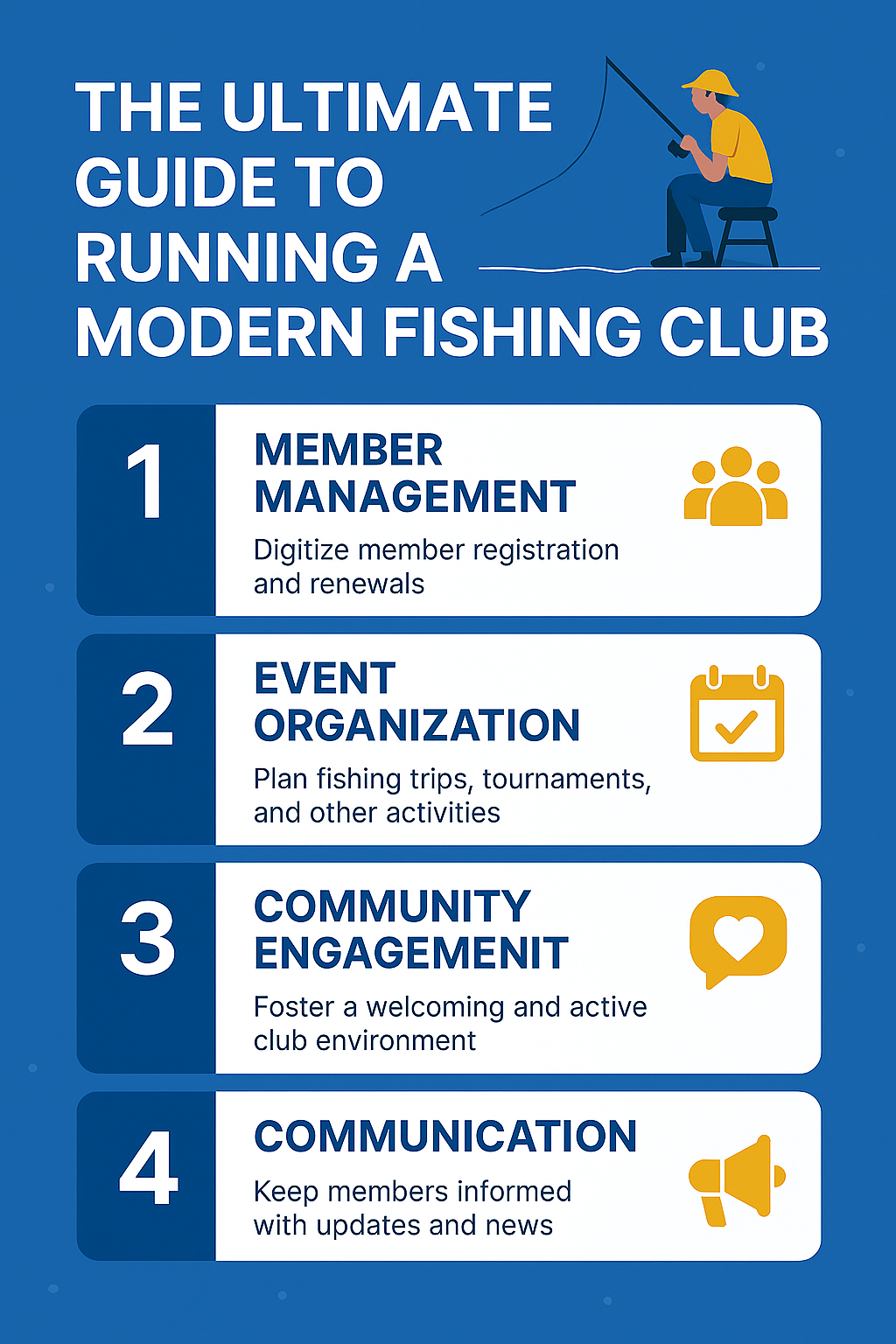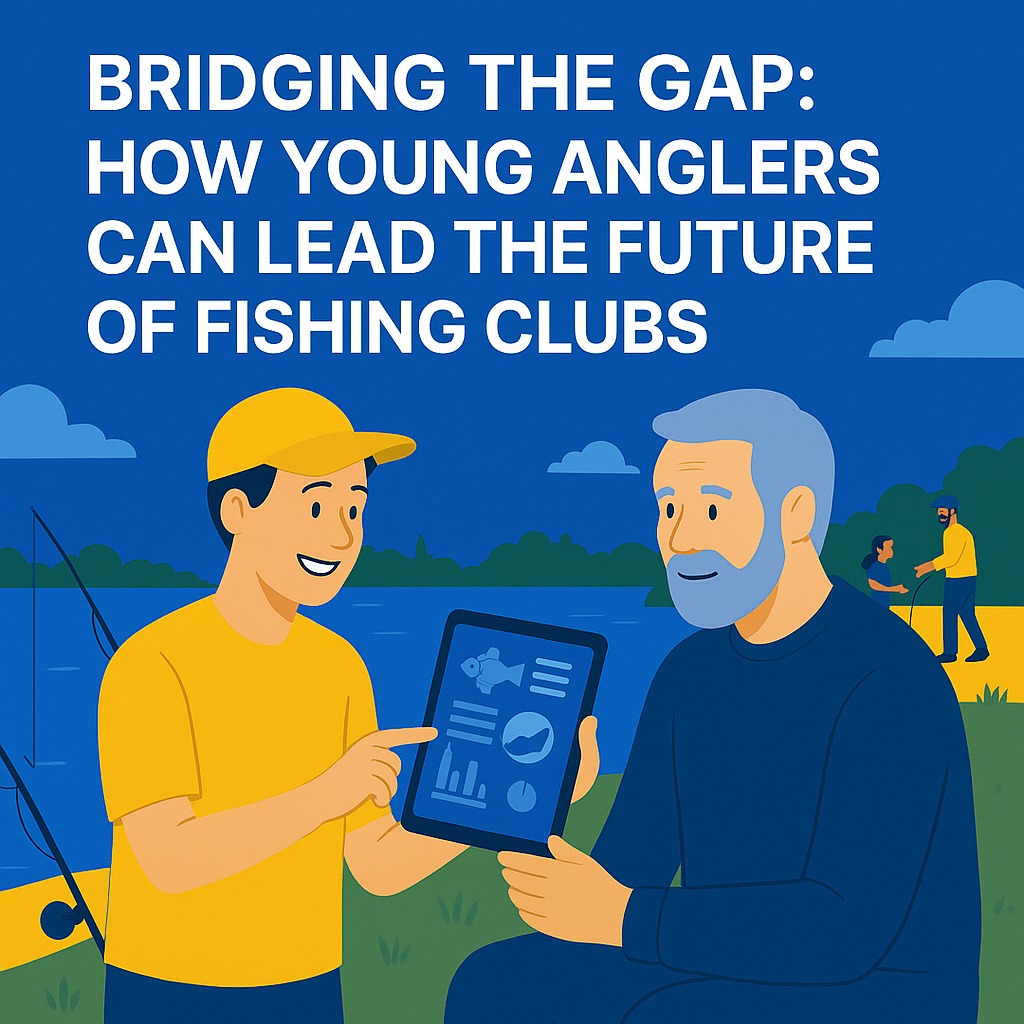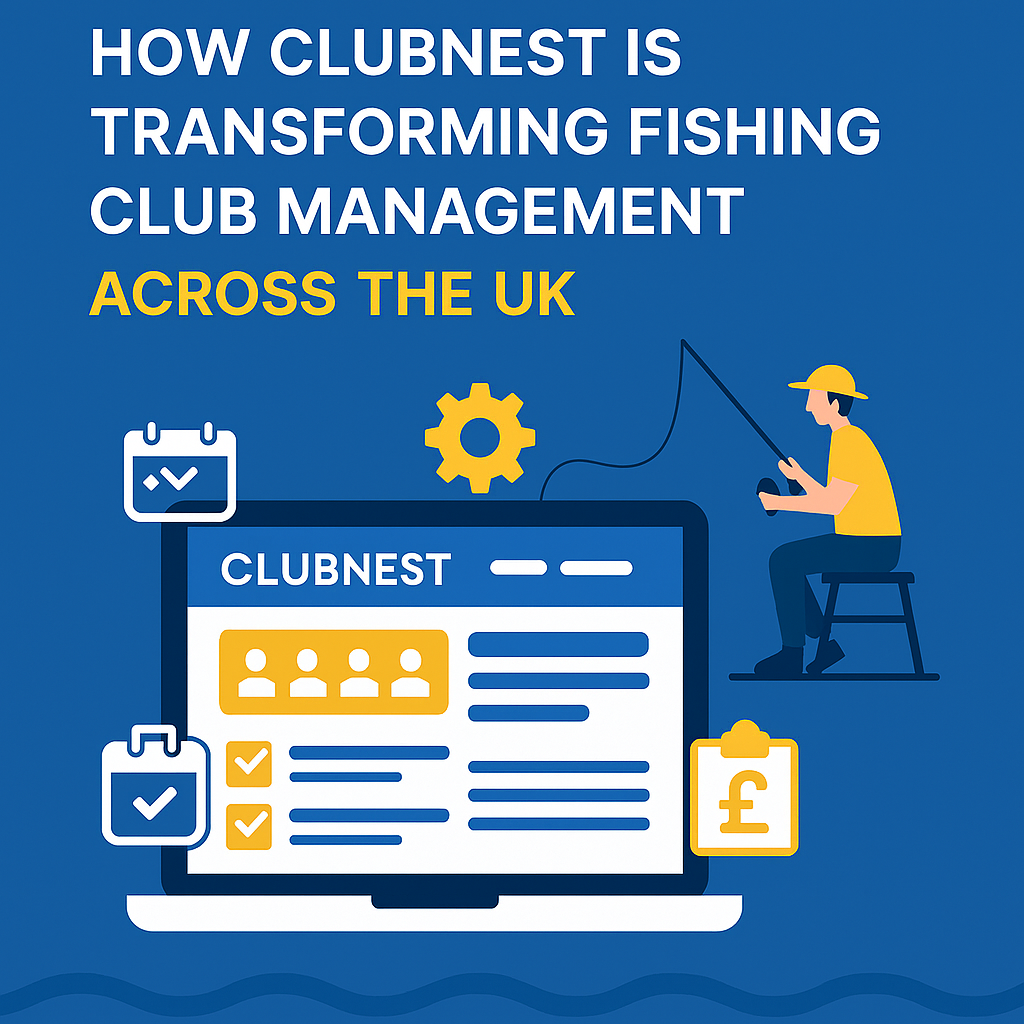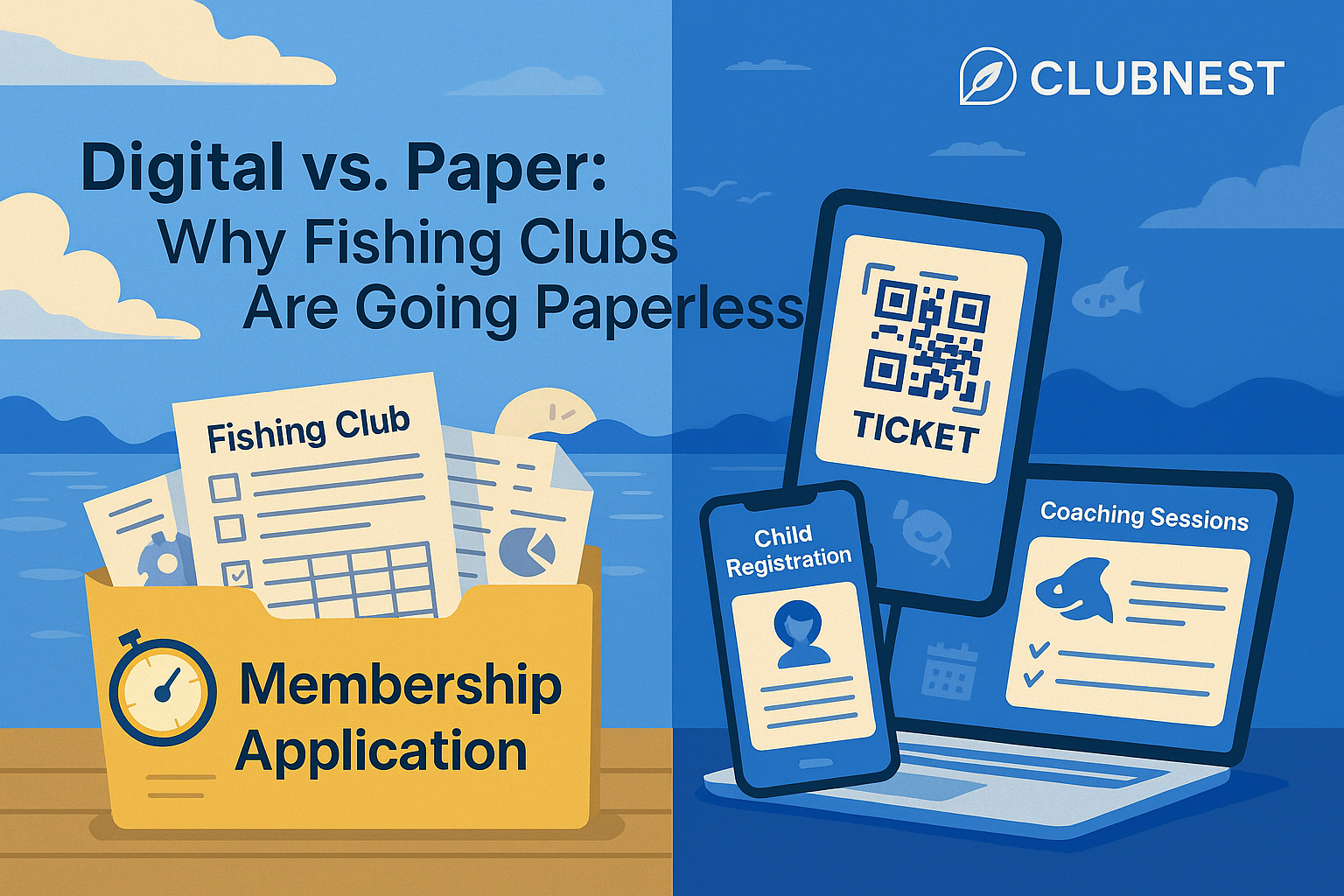The Ultimate Guide to Running a Modern Fishing Club (2025 Edition)
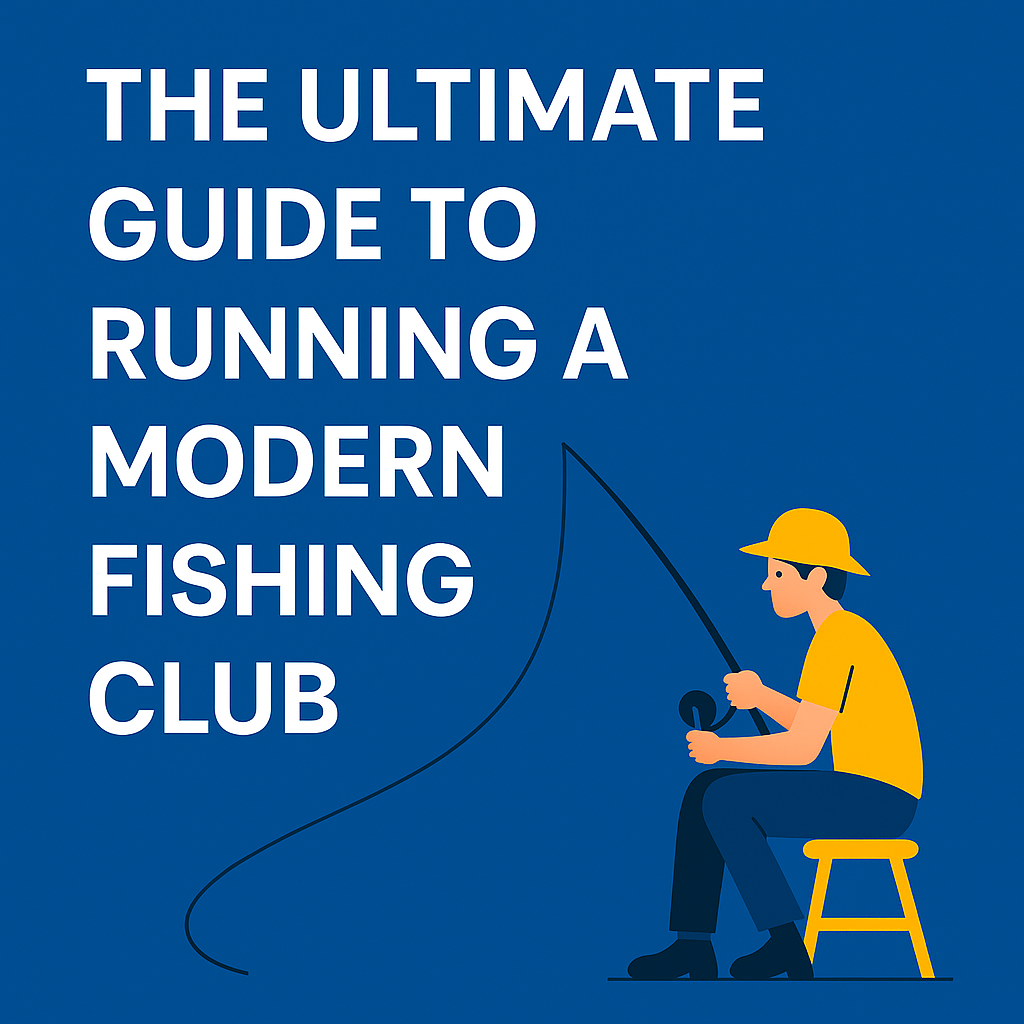
Introduction
Angling is one of the UK’s most cherished pastimes, drawing in generations of enthusiasts who find peace, competition, and community by the water. However, behind every successful fishing session is a well-organized club making it all possible. In this ultimate guide, we’ll explore everything you need to know about running a modern fishing club — from governance and digital transformation to community engagement and environmental stewardship.
Chapter 1: The Evolution of Angling Clubs
Fishing clubs have long been at the heart of local communities, offering structure for casual weekend anglers and dedicated competitors alike. Yet, many clubs still operate using outdated systems — paper forms, manual processes, and fragmented communications. Modernizing isn't just a luxury — it’s essential for survival and growth.
Key Challenges Clubs Face:
-
Paper-based membership forms
-
Cash-only payment tracking
-
Uncoordinated event planning
-
Little to no data insights
-
Poor communication with members
Chapter 2: Establishing a Strong Foundation
1. Define Your Mission A clear mission guides all decisions. Are you focused on juniors? Conservation? Competitive fishing? Having clarity boosts your credibility and appeal.
2. Build Your Team Every club needs structure. Roles may include:
-
Club Secretary
-
Membership Officer
-
Bailiff or Waterkeeper
-
Treasurer
-
Junior Coaching Lead
3. Register the Club Consider affiliating with bodies like:
-
Angling Trust
-
Canal & River Trust
-
Environment Agency (for rod licenses)
4. Choose Legal Structure
-
Unincorporated Association (simple)
-
Charitable Status (for community clubs)
-
Limited Company (for more formal orgs)
Chapter 3: Digital Infrastructure — Going Paperless
Running a fishing club with spreadsheets, forms, and hand-written notes can lead to confusion and mistakes. That’s where systems like Clubnest come in.
Why Go Digital?
-
Instant communication with members
-
Online payments and renewals
-
Event booking with QR-code check-in
-
Secure document and image storage
-
Performance insights & reports
Top Features of Clubnest:
-
Membership registration and renewals
-
Junior angler profiles and parental consents
-
Match & coaching session bookings
-
Ticket scanning tools for bailiffs
-
Club announcements and document sharing
-
GDPR-compliant data handling
Chapter 4: Building and Managing Membership
Your members are your lifeblood.
Steps to Attract and Retain Members:
-
Easy-to-use signup process
-
Welcome emails and onboarding
-
Transparent pricing (junior, senior, family options)
-
Loyalty rewards or early-bird renewal offers
Managing Membership with Software:
-
Automate renewal reminders
-
Add notes to individual members
-
Track attendance at coaching or matches
-
Issue QR code digital ID cards
Chapter 5: Financial Transparency and Fundraising
Without clear financial tracking, it’s hard to grow or apply for grants.
Modern Money Management Tips:
-
Use Stripe or GoCardless for online payments
-
Keep a digital ledger of income vs expenses
-
Categorise: licenses, maintenance, coaching, admin
Fundraising Ideas:
-
Local business sponsorships
-
Raffles & match entry fees
-
Club-branded merchandise
-
Grant applications (via Sport England or EA)
Chapter 6: Planning Matches, Coaching & Events
A modern club calendar should offer:
-
Seasonal fishing matches (open & internal)
-
Junior coaching programmes
-
Social events and workshops
-
Maintenance days or conservation activities
Tips for Success:
-
Publish dates early
-
Allow online booking
-
Use QR code check-ins for attendance
-
Post event summaries and photos online
Chapter 7: Junior Development Programmes
Modern clubs play a vital role in introducing the next generation to angling.
What a Good Junior Programme Looks Like:
-
Weekly or monthly coaching sessions
-
DBS-checked coaches and assistants
-
Age-specific activities (whip, waggler, feeder, pole)
-
Indoor winter sessions (e.g., rig building, float making)
-
End-of-year awards and progression pathways
With Clubnest, coaches can:
-
Track attendance and progression
-
Add session notes to each junior
-
Register new children with parental approval
-
Communicate updates to parents instantly
Chapter 8: Environmental Responsibility
Sustainability should be part of every club’s ethos.
How Clubs Can Help:
-
Encourage catch-and-release
-
Partner with local wildlife groups
-
Run litter-pick or water testing days
-
Install signage about protecting wildlife
Chapter 9: Community, Diversity & Inclusion
Your club should reflect the community it serves.
Inclusion Goals:
-
Encourage women and girls to fish
-
Be accessible to disabled anglers
-
Engage BAME communities
-
Partner with mental health or veterans charities
Success Story:
One Clubnest-powered club launched “Reel Wellbeing” sessions — a mental health support programme that uses angling to improve wellbeing and build confidence.
Chapter 10: Marketing & Growth
Ways to Grow Your Club:
-
Build a professional website with clear info
-
Use social media for event updates and photos
-
Add testimonials from members and parents
-
Optimise for SEO with regular blog posts
Digital Tools to Use:
-
Facebook Groups
-
WhatsApp Broadcast Lists
-
Instagram Reels
-
Mailchimp or Brevo for newsletters
-
Google My Business for visibility
Chapter 11: Compliance & Safeguarding
Every club needs to follow proper safeguarding and data protection practices.
What You Need:
-
Safeguarding Officer
-
Health & Safety policy
-
Risk Assessments for venues
-
GDPR policy and consent forms
Conclusion: The Future of Angling Clubs
Running a modern fishing club isn’t just about catching fish — it’s about building community, educating the next generation, protecting our waters, and adapting with the times.
Tools like Clubnest empower clubs with the technology and structure needed to thrive in 2025 and beyond.
Whether you’re running a junior club, managing multiple waters, or simply trying to keep things organised — the time to modernise is now.
